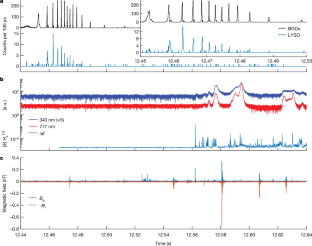2024-10-02 ノースカロライナ州立大学(NCState)
<関連情報>
- https://news.ncsu.edu/2024/10/new-theory-demystifies-crystallization-process/
- https://www.sciencedirect.com/science/article/abs/pii/S2590238524004430
溶質は結晶化しない 結晶化の「魔法」を解明する相図からの洞察 Solutes don’t crystallize! Insights from phase diagrams demystify the “magic” of crystallization
James D. Martin
Matter Available online: 2 October 2024
DOI:https://doi.org/10.1016/j.matt.2024.08.011
Graphical abstract

Progress and potential
Whether growing crystals for solar cells, modeling ice formation in clouds, or preventing kidney stones, there is a need for accurate mechanistic descriptions of crystal growth. Traditional models presume that crystals grow by diffusion and attachment of individual solute particles to a growth interface. However, that assumption is thermodynamically invalid since equilibrium-phase diagrams establish only the solvent-phase crystallizes.
A new paradigm for solution crystal growth, grounded in thermodynamics and reliant on the cooperative-ensemble nature of condensed matter, is presented. Our transition-zone theory demonstrates that solution crystallization proceeds by the formation of a melt-like pre-growth intermediate followed by the rate-determining cooperative organization into the long-range order of a crystal. This new paradigm resolves mechanistic riddles and provides important mechanistic insights into the grand challenges of climate and earth changes, sustainable energy, and health.
Summary
Crystals are ubiquitous in nature and technology. Despite the importance of understanding mechanisms of crystallization, conventional theories have proved inadequate. Consideration of phase diagrams reveals that these theories’ failings result from thermodynamically invalid assumptions, including that solutes are the crystallizing phase and that Ksp describes solubility. Thermodynamics requires that the nutrient (solvent) be the crystallizing phase. This perspective provides tools to rigorously characterize a phase diagram to explicitly determine the components of the crystallizing system and the influence of the diluent on the liquidus of the nutrient. It is shown that diluents can change the liquidus of the nutrient but do not participate in the rate-determining step of crystal growth. The rate-determining step is found to be the propagation of the crystalline phase boundary through a melt-like intermediate. This transition-zone theory model accurately describes crystal growth rates for all concentration-temperature conditions and resolves “riddles” of crystal morphology and growth rates.



